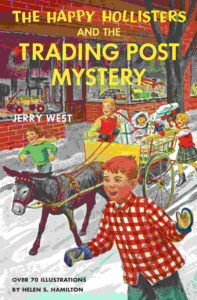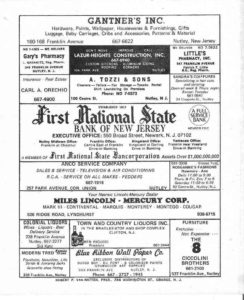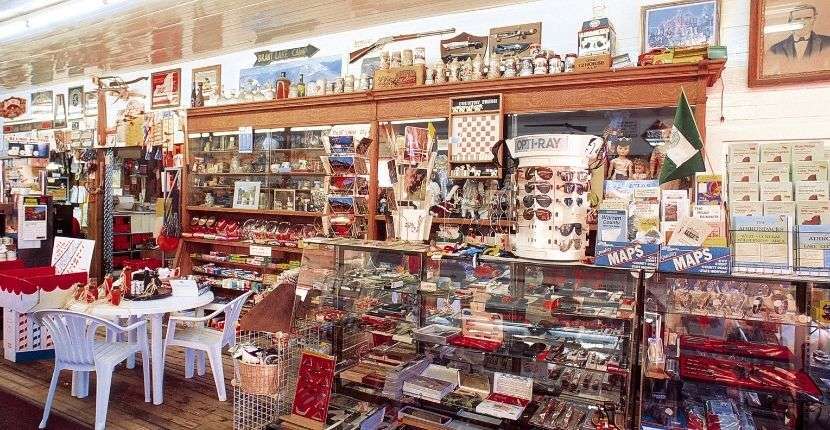 Where can you find hardware, toys, and home goods all on the same shelves? At a general store, of course! General or variety stores, like The Trading Post, Mr. Hollister’s combination hardware, toy, and sporting-goods store in Shoreham, have been an American staple since colonial times and continue to delight shoppers today with their unique and accessible array of goods.
Where can you find hardware, toys, and home goods all on the same shelves? At a general store, of course! General or variety stores, like The Trading Post, Mr. Hollister’s combination hardware, toy, and sporting-goods store in Shoreham, have been an American staple since colonial times and continue to delight shoppers today with their unique and accessible array of goods.
In the United States, general stores have existed since the early 1600s, when European settlers first established the original thirteen colonies. Sometimes literally called “trading posts,” early versions of general stores were places where people could find items like furs and crops. General stores grew in popularity as early colonists branched out to other areas of the country, especially during westward expansion in the 19th century. As people moved west to build homesteads or search for gold, simple but well-stocked general stores became a vital part of everyday life and allowed people to find easy access to necessary goods, ranging from sugar to warm clothes for the winter.
For many communities, they were the main—and sometimes only—place in town to find everyday goods. In small communities, general stores also served as social spaces. People gathered to socialize, get the town gossip, or receive mail and important information from the nearest big city.
In the 1950s and 1960s, when Mr. Hollister would have been operating The Trading Post in Shoreham, general and variety stores weren’t necessarily the only places in town where people could get goods, but they were still a common sight. During this time, some general stores shifted away from focusing on foods and other staples and included more household and novelty items to suit the needs of housewives and nuclear families rather than rugged homesteaders.
For example, Gantner’s Inc. in Nutley, New Jersey, was the favorite local variety store of Happy Hollisters author Andrew Svenson (aka Jerry West) and his family and was the inspiration for Mr. Hollister’s store in The Happy Hollisters book series. Gantner’s prided itself on its wide offering of “hardware, paints, wallpapers, houseware and furnishings, gifts, luggage, baby carriages, cribs and accessories, patterns and materials.” Other stores focused on a more specific set of goods, like The Trading Post did, selling hardware, sporting goods, and toys. In the 1950s and 1960s, general and variety stores might not have been the glue holding small towns together, but they still remained a place where housewives like Elaine Hollister could find wallpaper to spruce up her home, or where kids like Pete, Pam, Ricky, Holly, and Sue Hollister could buy fun toys.
Today, we might not call them general stores, but the concept still exists in convenience stores and city bodegas. Stores like Dollar Tree and 7-11—which both began as traditional variety stores—are still places where people can conveniently find the things they need. Whether you’re looking for a gallon of milk or supplies for a broken-down car, general stores still have what you need, just as they have throughout history.
by Libby Svenson Kennedy
Sources:
Research notes, Andrew Svenson Archives of The Hollister Family Properties Trust

